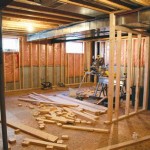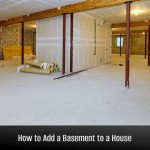Signs of Termites in Basement: A Comprehensive Guide
Termites, the silent destroyers, can wreak havoc on your basement without you even noticing. Early detection is crucial to prevent significant damage and costly repairs. Here's a comprehensive guide to the essential signs of termite infestation in your basement:
1. Droppings (Fecal Pellets)
Termites leave behind droppings known as fecal pellets. These tiny, wood-colored or black pellets resemble coffee grounds or pepper flakes. They are often found near baseboards, window frames, or in areas with termite activity.
2. Mud Tubes
Termites create mud tubes to travel between their colony and their food source (wood). These tubes are typically 1/8 to 1/2 inch wide and can be found on basement walls, floors, or pipes. They appear as thin, winding, and fragile structures made of mud and soil.
3. Swarmers
During the reproductive season, termites develop wings and shed them after swarming. You may find discarded wings around windows, doors, or light fixtures in your basement. They resemble small insects with white or brown bodies and transparent wings.
4. Damaged Wood
Termites feed on wood, leaving behind damaged or hollowed-out beams, joists, or other wooden structures. Look for signs of gnawing, soft spots, or crumbling wood. You may also notice small holes in the wood where termites have entered.
5. Buckling or Sagging Floors and Ceilings
As termites weaken wooden structures, they can cause floors and ceilings to buckle, sag, or cave in. This is a more severe sign of infestation and requires immediate attention.
6. Squeaking or Crumbling Baseboards
Termites often target baseboards, weakening them and creating a hollow sound when stepped on. You may also notice small cracks or gaps where termites have entered the baseboards.
7. Musty Odor
Termites emit a musty or moldy odor when they are present in large numbers. This odor is caused by the fungus that termites cultivate within their colonies.
8. Sheetrock Damage
In some cases, termites can reach sheetrock and feed on the cellulose it contains. This can cause the sheetrock to become soft, discolored, or even crumble.
9. Presence of Termite Nests
Termite nests are typically found in moist areas, such as basements. They can be large and brownish or smaller and hidden within wooden structures. If you discover a termite nest, it is essential to contact a professional exterminator immediately.
10. Moisture Problems
Termites are attracted to moisture, so the presence of leaks, condensation, or high humidity in your basement can increase the risk of infestation. Inspect your basement regularly for any signs of moisture problems.
Preventative Measures
To prevent termite infestations, consider the following measures:
- Eliminate moisture sources in your basement.
- Seal cracks and gaps in your foundation and walls.
- Store firewood away from your house.
- Remove wooden debris and mulch from around your perimeter.
- Inspect your basement regularly for any signs of termites.
Conclusion
Detecting termite infestations early can save you thousands of dollars in repairs. By being aware of these essential signs and taking preventative measures, you can protect your basement and your home from these destructive pests.

Signs Of Termites Are Not To Be Ignored

Termite Damage Baker S Waterproofing

What Does Termite Damage Look Like Appearance

Early Signs Of A Termite Infestation Forbes Home

Signs Of Termite Infestation By Franklin Pest Solutions

How Do You Get Rid Of Termites Think Like A Bug Myfixituplife

Get Rid Of Termites Omega Termite Pest Control

What Termite Damage Looks Like How To Inspect For Infestation With Charles Evans On Location Pest Control Philadelphia S Trusted Exterminator 267 582 2687

Spencer Pest Services Control And Exterminator Servicessigns Of A Termite Infestation

Signs Of Termite Infestation S
See Also








